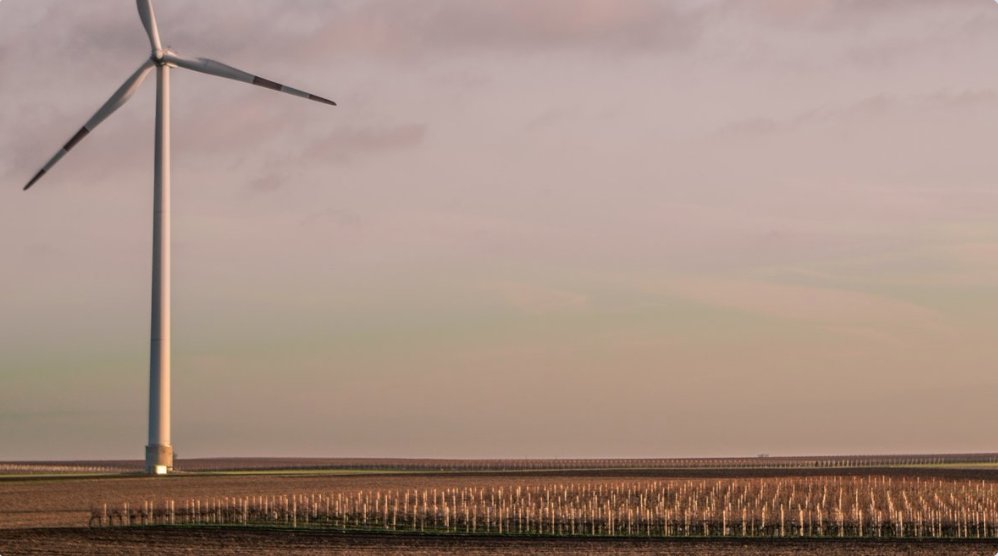Putting place at the heart of a green recovery
Posted on 03 Dec 2020 Categories: Blog, Climate crisis, Cross-posts, New economic models, Community Wealth Building
by Eleanor Radcliffe
With fresh discussion this week about the importance of a green recovery, it is increasingly clear that post-Covid rebuilding must have a just transition away from a carbon-based economy at its core. The government have promised £350 million to fuel a green recovery, and Labour have challenged them to go further and support up to 400,000 clean, green jobs, amongst other policies which could enable a green recovery.
While the shape of a green recovery is debated in central government, we know that to tackle the economic and environmental challenges we face (and which have been thrown into the light through the pandemic) it will be crucial to take an approach to economic recovery which recognises the importance of place. Our paper, A Green Recovery for Local Economies, released in July this year, articulates many opportunities for an approach to recovery which builds community wealth and places climate at the heart of how we “build back better”.
“a key, green opportunity for localities”
One area of potential is community energy – the delivery of community-led renewable energy, energy demand reduction and energy supply projects. These tools represent a key, green opportunity for localities to democratise their local economies, wield the power of anchor institutions and build community wealth. Community energy projects can be wholly owned and/or controlled by communities, or in partnership with commercial or public sector partners, thus placing communities at the centre of energy systems, creating accountability, participatory governance and democratising the benefits of carbon transition, alongside enabling the further decentralisation of the energy system.
Localities have been enabling the development of community energy initiatives for years, with a prime example being Plymouth’s Ernsettle Solar programme. Plymouth City Council enabled the development of a 4.1 megawatt ground-mounted solar array by supporting the establishment of Plymouth Energy Community and Four Greens Community Trust in 2013 and 2014 respectively, and the asset transfer of Council-owned land on which to build the array. These two co-operatives collaborated to make the project a reality, with opportunities for the local community to invest and co-own the array through community shares. They raised just under £1m and community members receive a return on this investment. The project also generates a community benefit fund, used to support projects addressing fuel poverty and carbon emissions in Plymouth.
“£4.6m in local economic benefit”
Community energy takes many forms, from heating to retrofit, low carbon transport to local energy generation and storage. In 2019 the community energy sector in England, Wales and Northern Ireland contained over 300 organisations owned and controlled by, or created for the benefit of, local communities. These generated £4.6m in local economic benefit, including almost £2m in grants and loans supporting local people, community organisations, charities and SMEs.
Community energy has immense potential within the landscape of local green economic recovery. It not only combines the community wealth building pillars of pluralising the local economy, socially productive use of land and property, and making financial power work for local places, but has the potential to meet the energy needs of local anchors and neighbourhoods, with ready-made supply chains. This means it can play a role in further addressing the goals and commitments many local authorities and other anchors have made in tackling the climate emergency.
“more needs to be done to address the climate emergency at a local level”
At present, however, the UK is still hugely under-resourced to meet what is required for energy transition. A recent example can be found in the frustration experienced by home-owners applying for the government’s Green Homes Grants and the lack of accredited installers available to do the work, with some describing the scheme as a “postcode lottery”. With central government slow to progress, lacking coherent and complete environmental objectives or costed delivery programmes, more needs to be done to address the climate emergency at a local level.
Now is the time to look to those inspirational, locally based initiatives which already exist, not just within community energy but across our potential green industries (such as social care and construction). These must be taken forward to further democratise our local economies, tackle climate change, and put place at the heart of a green economic recovery.
Eleanor Radcliffe is a Researcher at CLES.
This was originally posted on the CLES blog on 13th November 2020.
Want to keep up-to-date with more articles like this? Sign up to our newsletter.
Posted on 03 Dec 2020 Categories: Blog, Climate crisis, Cross-posts, New economic models, Community Wealth Building

